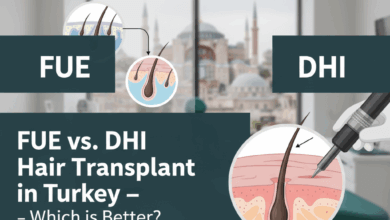Shock Loss After Hair Transplant – Causes, Timeline & Recovery Tips
Understanding temporary hair shedding after your transplant and how to manage recovery for the best regrowth results.

Introduction
Experiencing sudden hair shedding after a hair transplant can be alarming — but don’t panic. This phase, known as shock loss, is a normal part of the healing process. Understanding why it happens, when to expect it, and how to promote healthy regrowth can ease your worries and help you care for your new hair properly.
What Is Shock Loss?
Shock loss refers to the temporary shedding of transplanted or existing hair that occurs a few weeks after a hair transplant procedure. It’s caused by surgical trauma, inflammation, or temporary disruption of the hair’s growth cycle.
It can affect both:
-
Transplanted hairs (recipient area)
-
Existing hairs (donor or surrounding areas)
Causes of Shock Loss
-
Surgical Trauma – The micro-incisions made during transplantation can stress nearby follicles.
-
Reduced Blood Supply – Temporary blood flow changes during healing can cause hair roots to enter the resting (telogen) phase.
-
Inflammation and Swelling – Postoperative inflammation may trigger temporary follicle dormancy.
-
Hormonal and Stress Response – Physical and emotional stress after surgery can affect hair growth cycles.
-
Poor Postoperative Care – Improper washing, scratching, or lack of nutrition can worsen shedding.
When Does Shock Loss Occur? (Timeline)
| Timeline | What Happens |
|---|---|
| 2–4 weeks post-surgery | Shedding begins; hair falls from both donor and recipient areas. |
| 4–8 weeks | Most shedding subsides; follicles rest in the telogen phase. |
| 3–6 months | New hair growth starts; texture may appear thin or soft. |
| 6–12 months | Thicker, denser hair growth becomes visible. |
How Long Does Shock Loss Last?
Typically, shock loss lasts 4 to 8 weeks, and regrowth begins around the third month. Most patients see significant recovery by 6–9 months after surgery.
Recovery Tips to Minimize Shock Loss
✅ Follow Surgeon’s Post-Op Instructions
Avoid scratching, massaging, or washing too vigorously in the first 10 days.
✅ Use Mild, Doctor-Recommended Shampoo
Gentle cleansing promotes scalp healing and circulation.
✅ Start PRP or Exosome Therapy
Clinical evidence shows that PRP (Platelet-Rich Plasma) or Exosomes can stimulate faster regrowth and strengthen transplanted follicles.
✅ Maintain Balanced Nutrition
Include biotin, zinc, iron, and vitamin D to support healthy regrowth.
✅ Manage Stress and Sleep Well
Cortisol spikes can worsen hair loss — relaxation helps recovery.
✅ Avoid Smoking and Alcohol
These restrict blood supply to follicles, delaying healing.
Scientific Insight
-
A 2021 study in Dermatologic Surgery reported that over 85% of patients experience mild shock loss, but regrowth is complete within 6 months.
-
Another 2022 review in Clinical Aesthetic Surgery Journal found that PRP and low-level laser therapy (LLLT)significantly reduce shock loss duration and improve regrowth quality.
When to See Your Surgeon
Consult your doctor if:
-
Shedding continues beyond 3 months.
-
You notice redness, itching, or infection.
-
Regrowth seems uneven or patchy after 6 months.
Conclusion
Shock loss is a temporary setback, not a failed transplant. With patience, proper care, and follow-up treatments, hair regrowth will return stronger and denser. Trust the process — your final results will be worth it.





